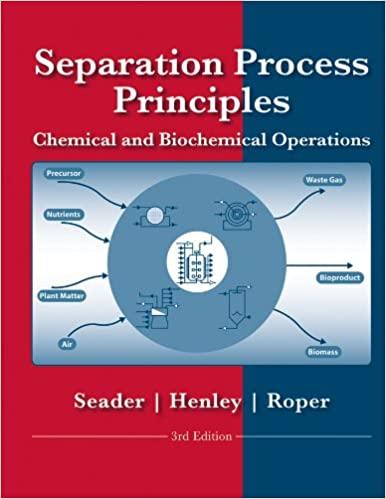A charge of 100 lbmol of 35 mol% n-hexane, 35 mol% nheptane, and 30 mol% n-octane is
Question:
A charge of 100 lbmol of 35 mol% n-hexane, 35 mol% nheptane, and 30 mol% n-octane is to be distilled at 1 atm in a batch rectifier, consisting of a still-pot, a column, and a total condenser, at a constant boilup rate of 50 lbmol/h and a constant reflux ratio of 5. Before rectification begins, total-reflux conditions are established. Then, the following three operation steps are carried out to obtain an n-hexane-rich cut, an intermediate cut for recycle, an n-heptanerich cut, and an n-octane-rich residue:
Step 1: Stop when the accumulated-distillate purity drops below 95 mol% n-hexane.
Step 2: Empty the n-hexane-rich cut produced in Step 1 into a receiver and resume rectification until the instantaneous-distillate composition reaches 80 mol% n-heptane.
Step 3: Empty the intermediate cut produced in Step 2 into a receiver and resume rectification until the accumulated-distillate composition reaches 4 mol% n-octane.
For properties, assume ideal solutions and the ideal-gas law.
Consider conducting the rectification in two different columns, each with the equivalent of 10 theoretical stages, a still-pot, and a total condenser reflux-drum liquid holdup of 1.0 lbmol. For each column, determine with a suitable batch-distillation computer program the compositions and amounts in lbmol of each of the four products.
Column 1: A plate column with a total liquid holdup of 8 lbmol
Column 2: A packed column with a total liquid holdup of 2 lbmol
Discuss the effect of liquid holdup for the two columns. Are the results what you expected?
Step by Step Answer:

Separation Process Principles Chemical And Biochemical Principles
ISBN: 9780470481837
3rd Edition
Authors: By J. D. Seader, Ernest J. Henley, D. Keith Roper





